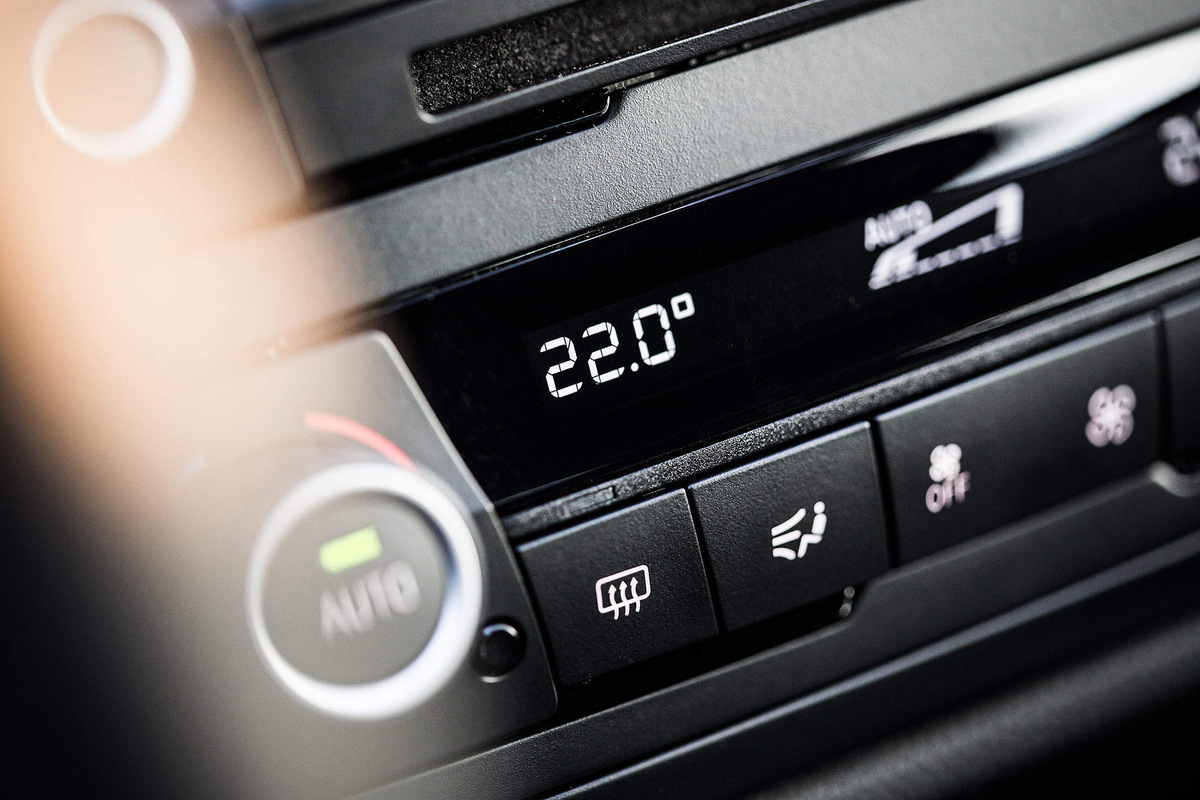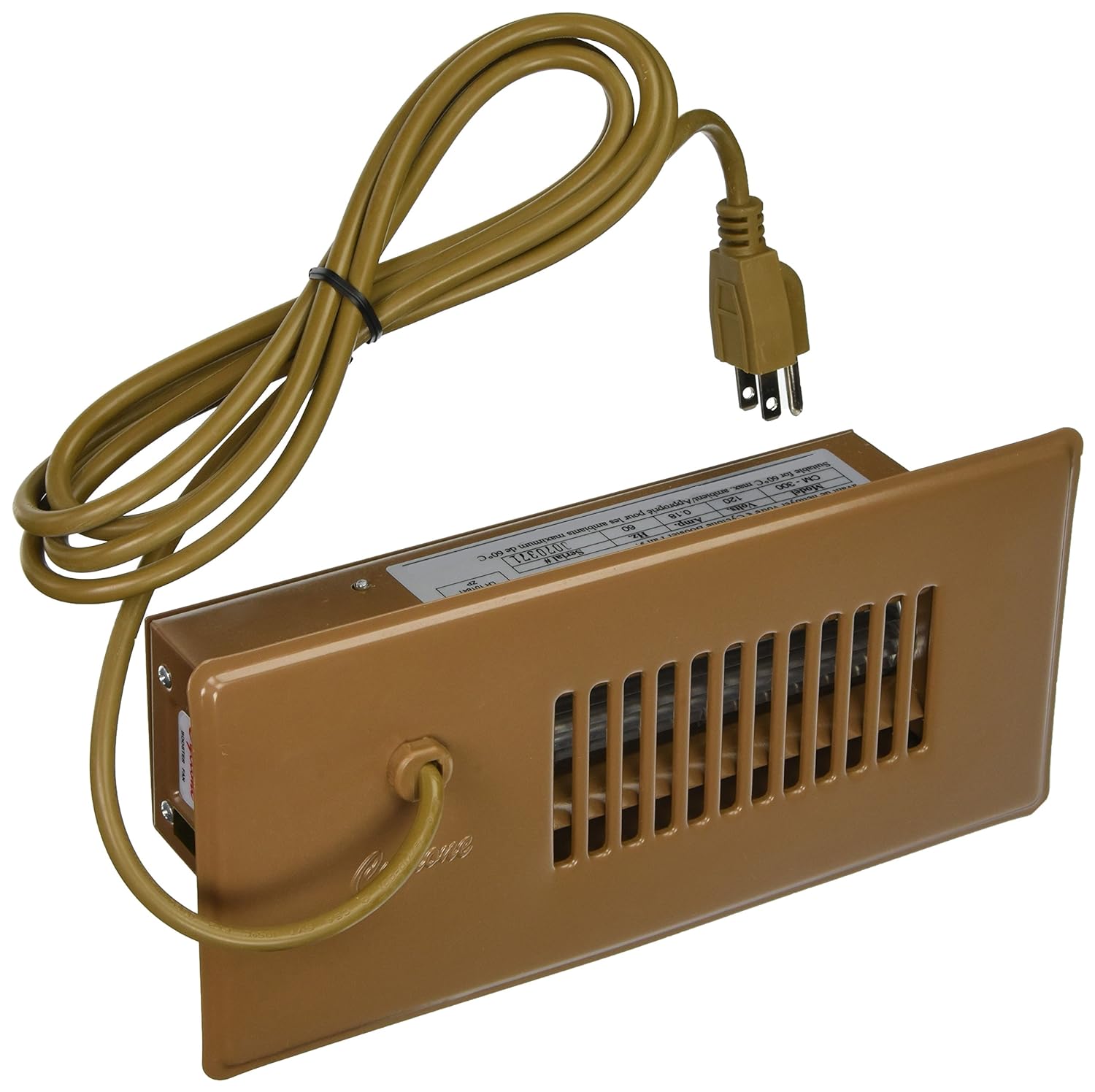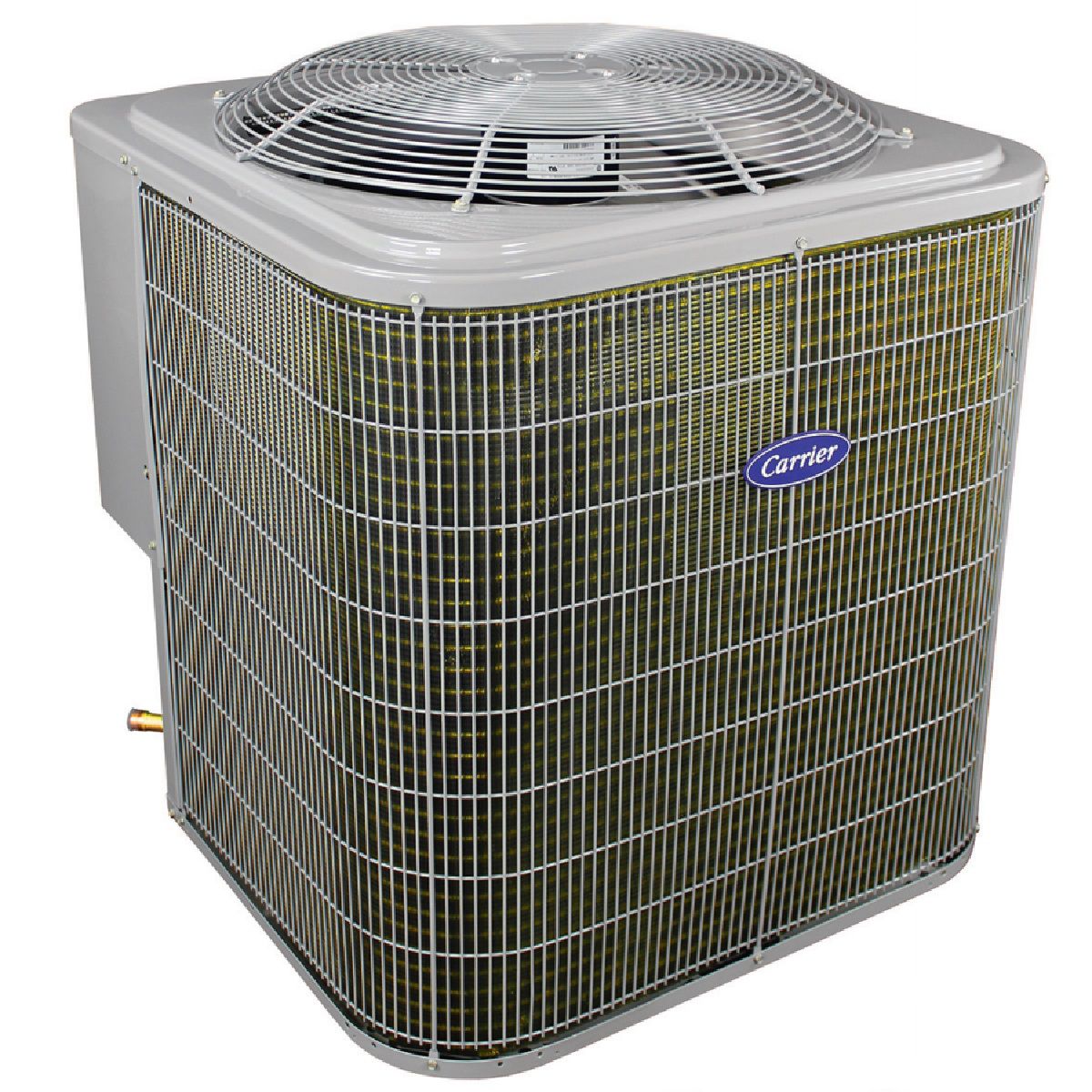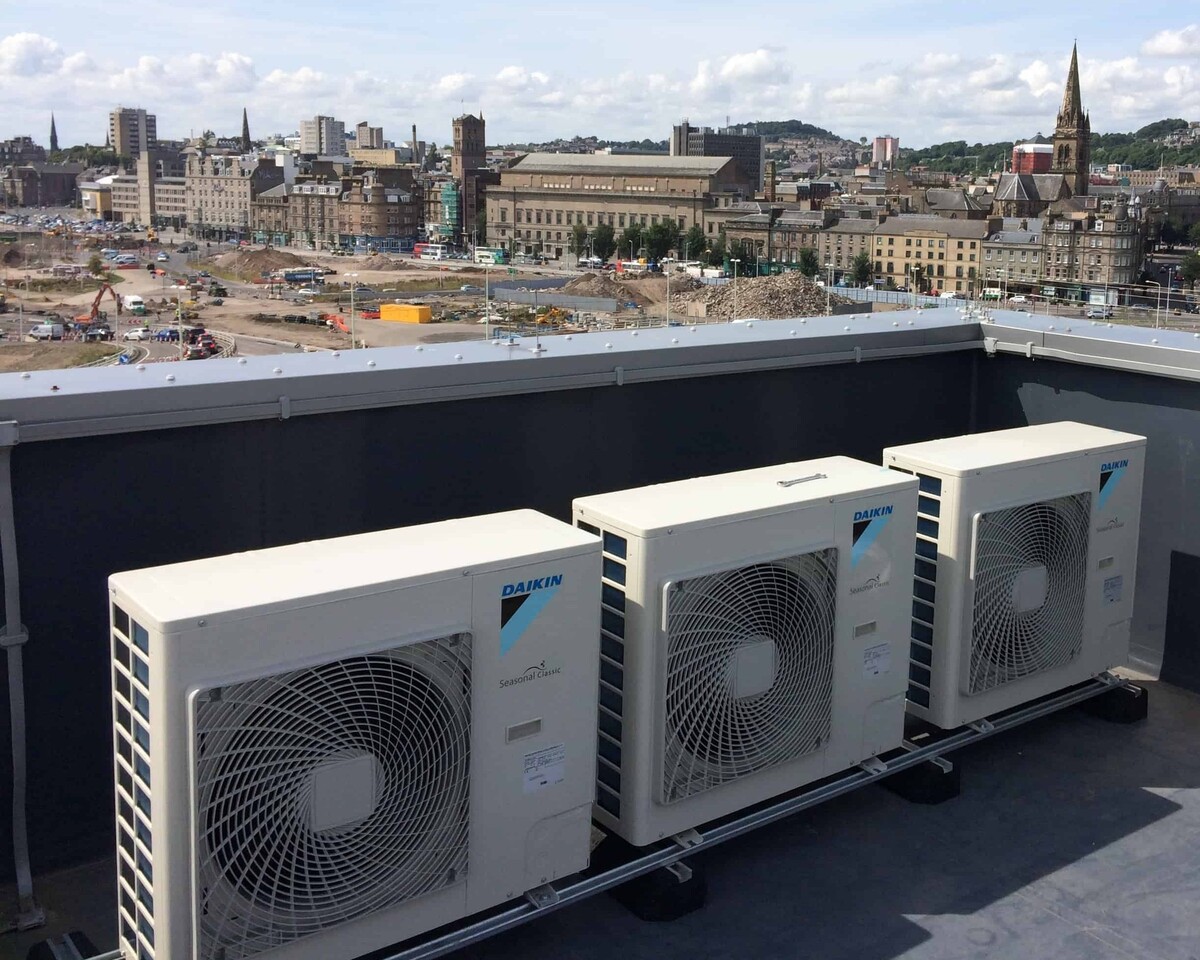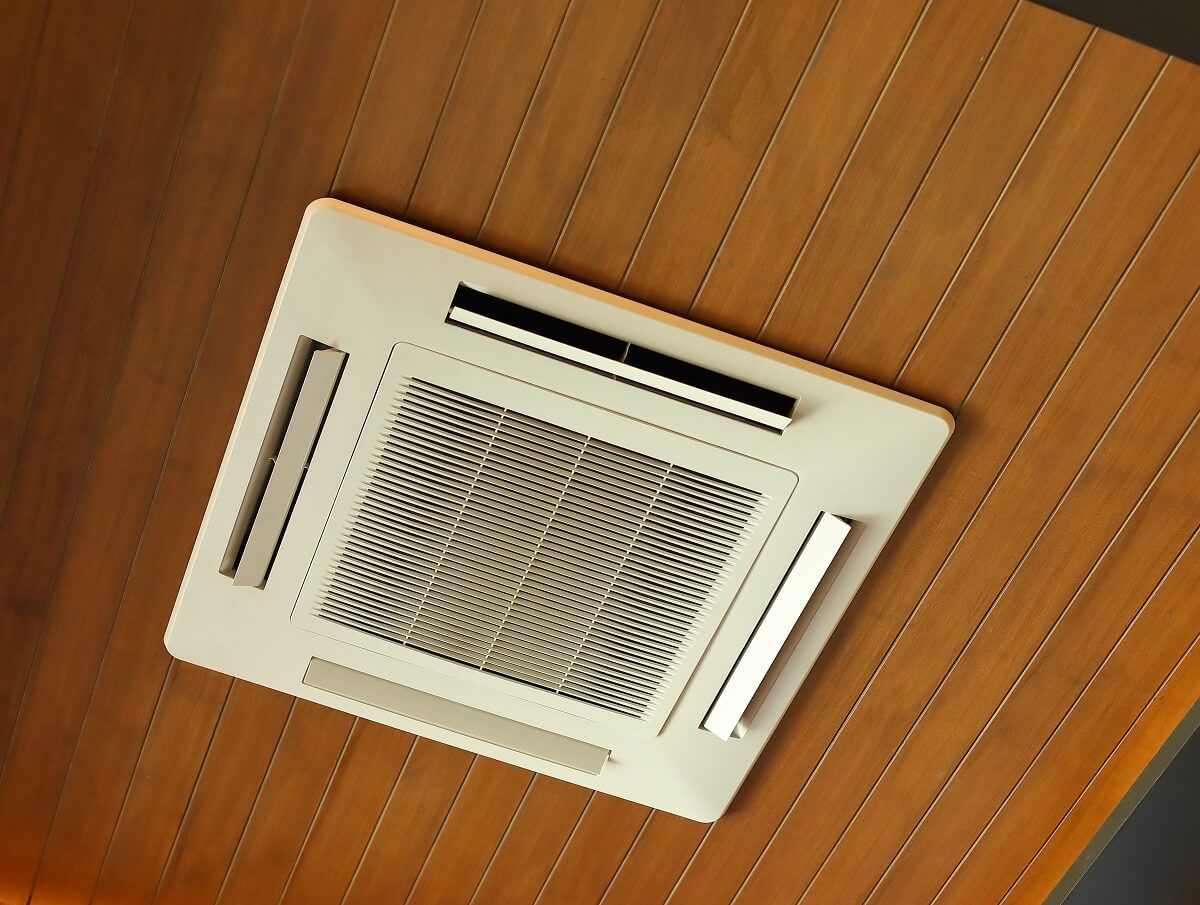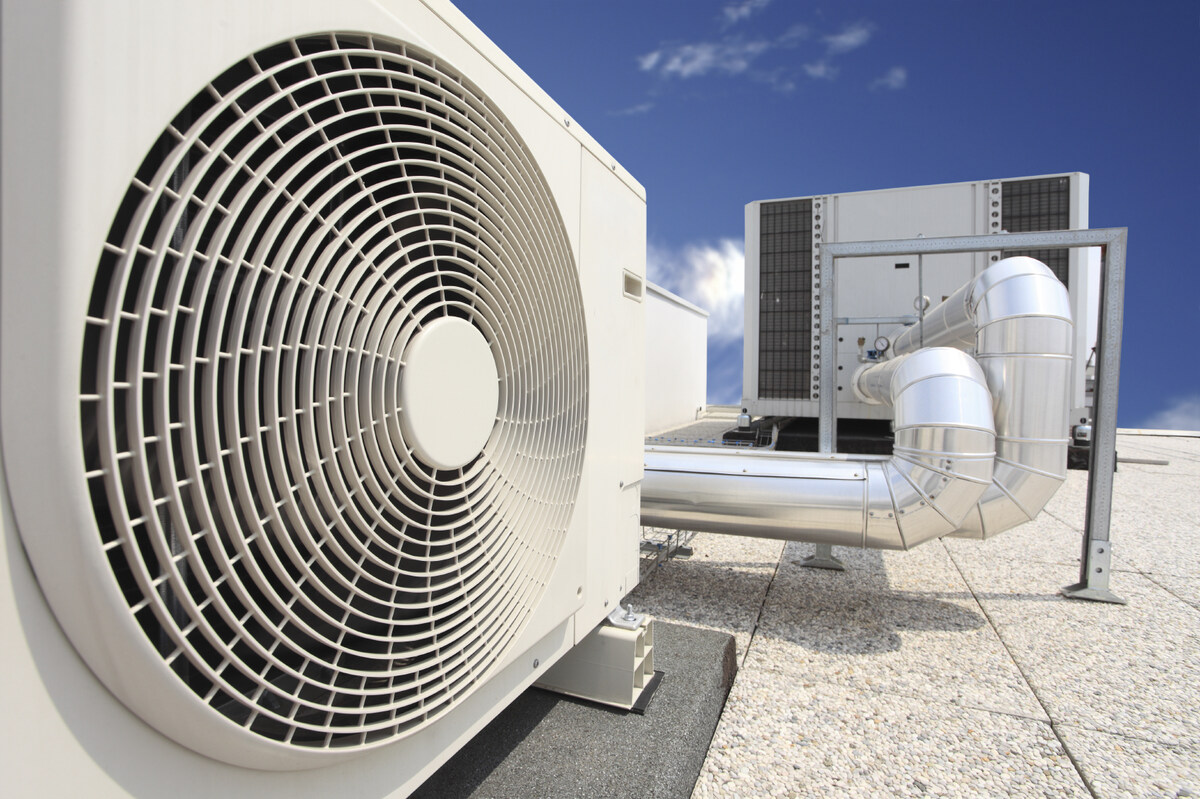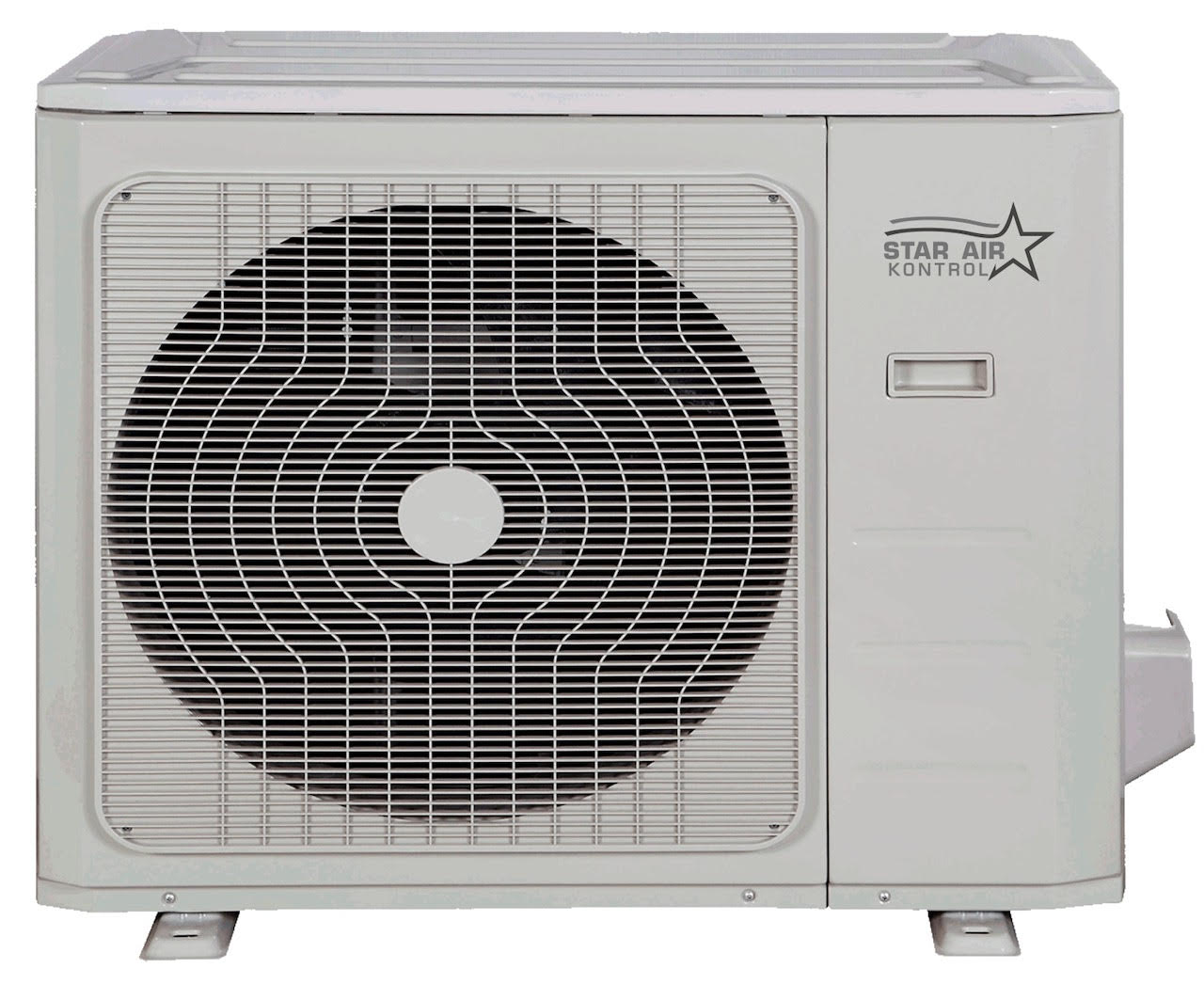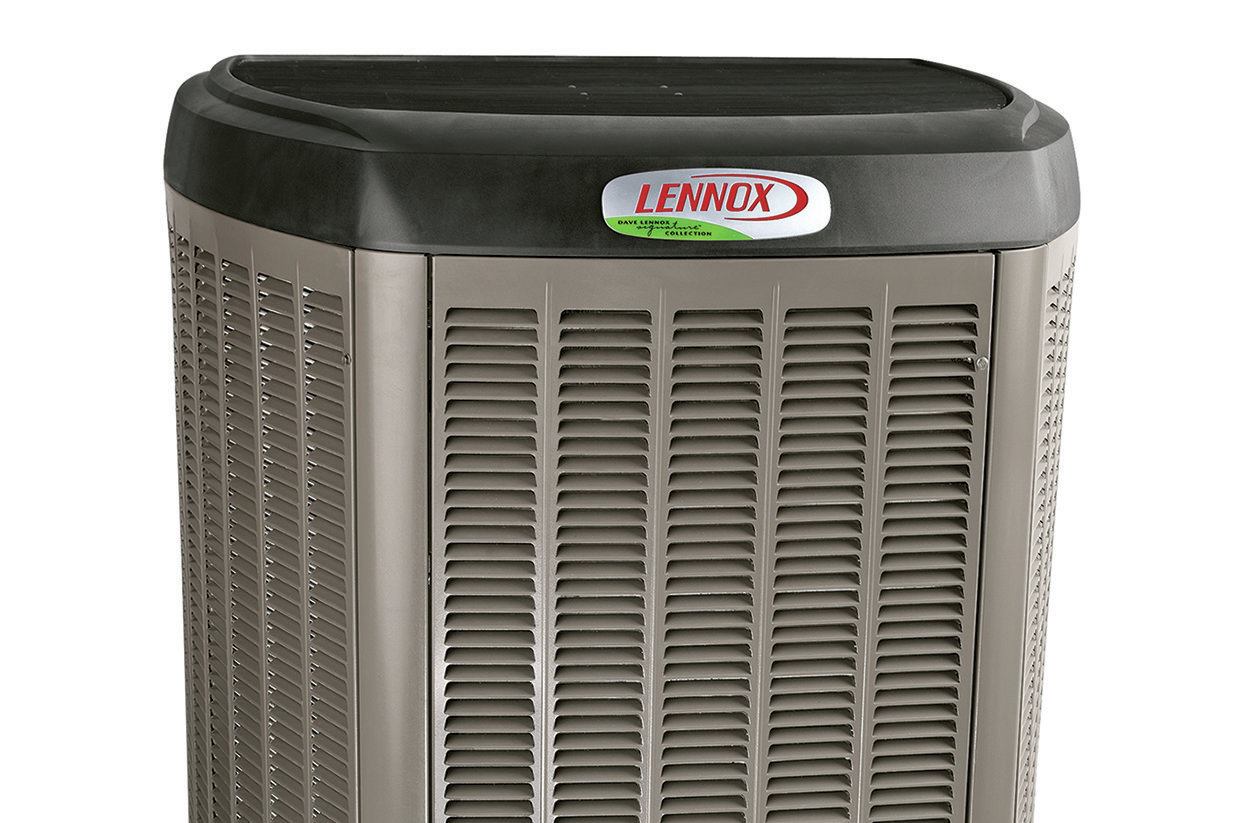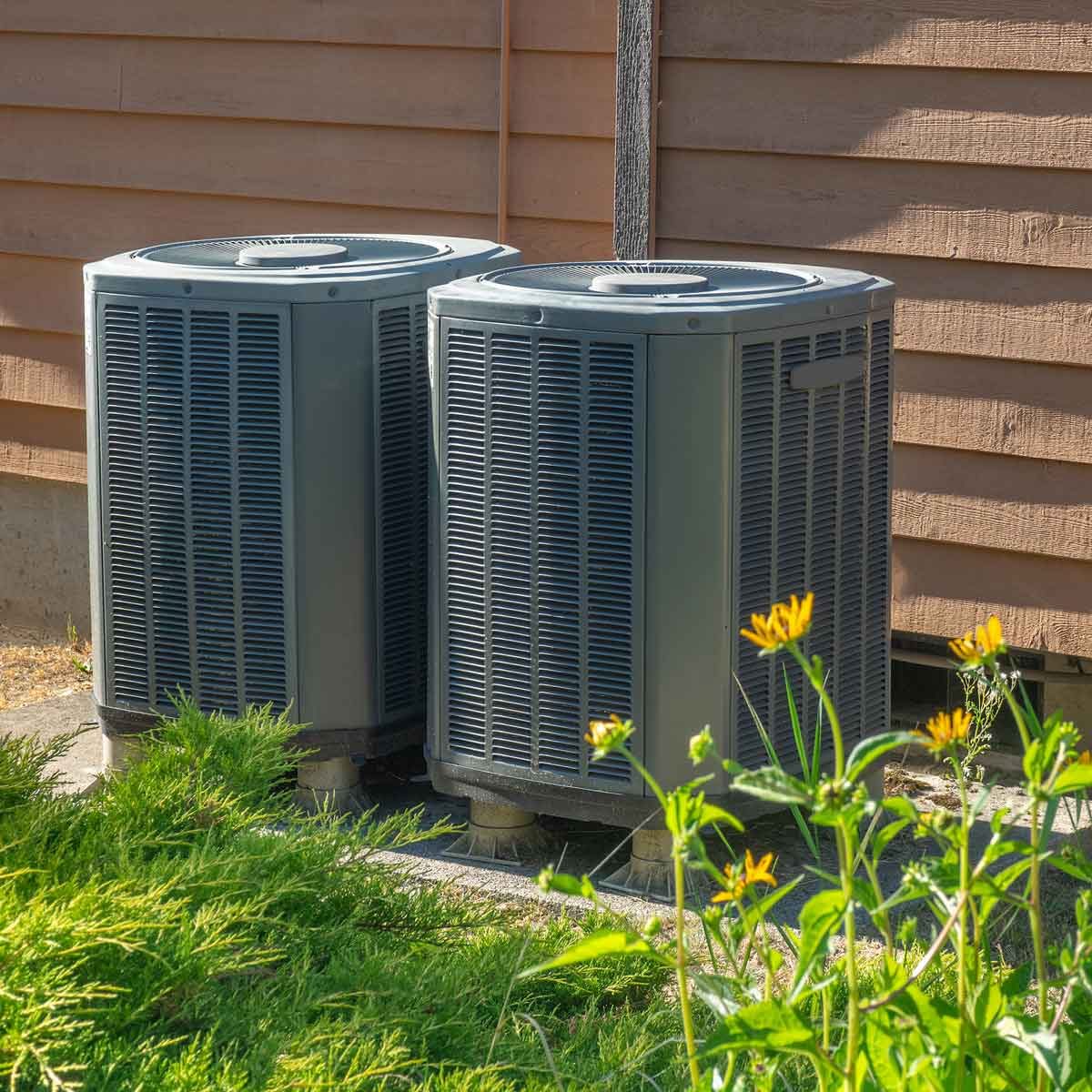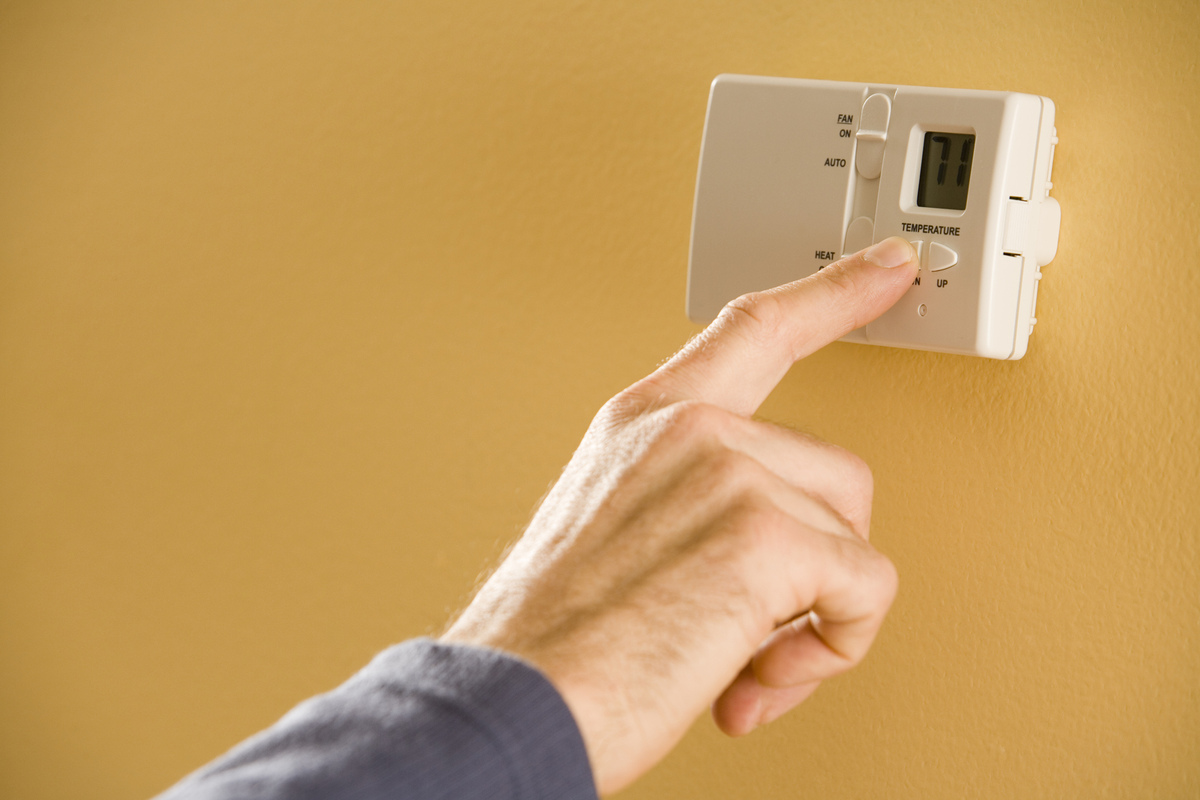Home>Home Maintenance>What Is BTU Air Conditioning
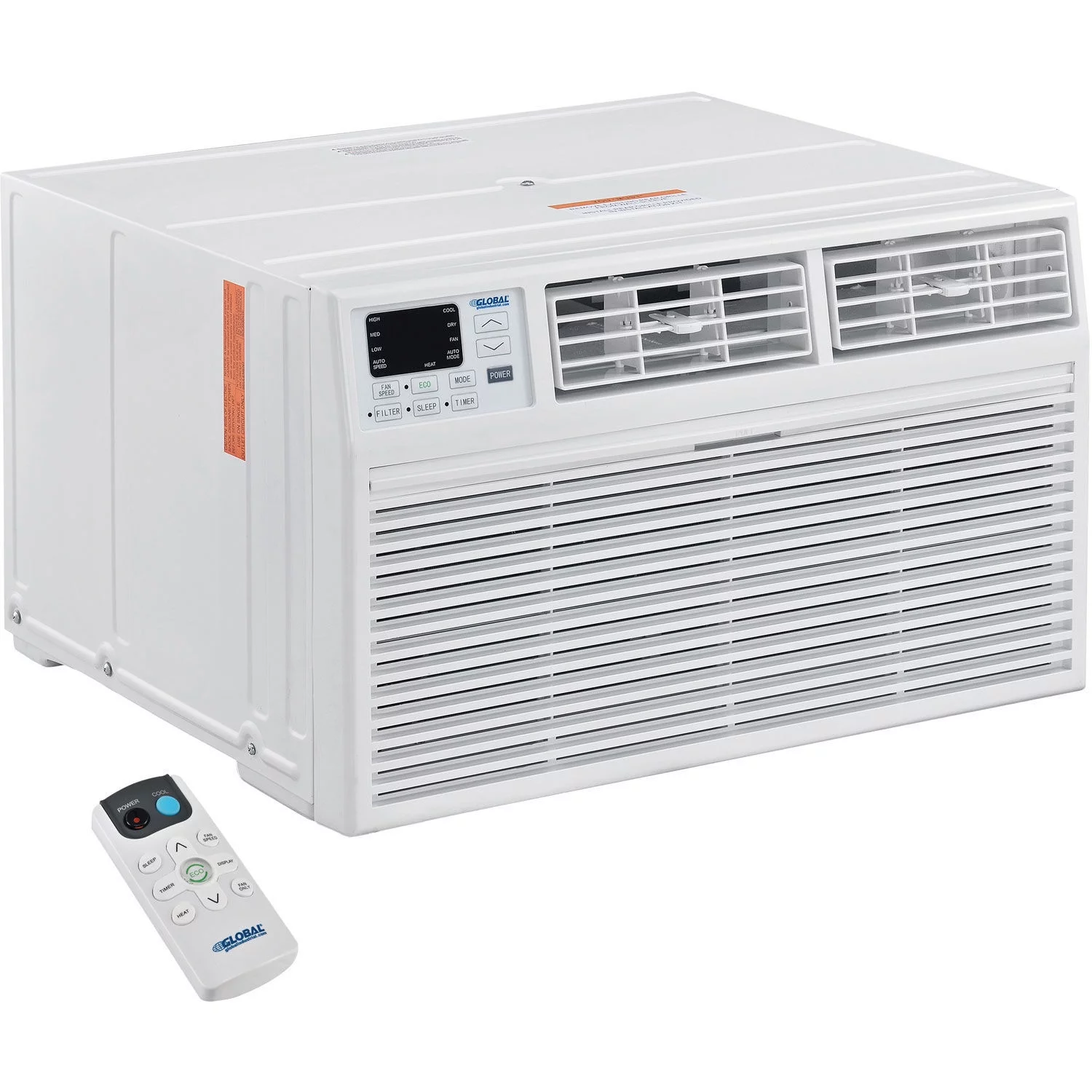

Home Maintenance
What Is BTU Air Conditioning
Modified: March 6, 2024
Learn what BTU air conditioning is and how it can help with home maintenance. Find out how to choose the right unit for your cooling needs.
(Many of the links in this article redirect to a specific reviewed product. Your purchase of these products through affiliate links helps to generate commission for Storables.com, at no extra cost. Learn more)
Introduction
Welcome to the world of BTU air conditioning! Whether you’re a homeowner, a renter, or a business owner, understanding the basics of BTU (British Thermal Units) in relation to air conditioning is essential for maintaining a comfortable living or working environment. In this comprehensive guide, we’ll dive deep into the world of BTU air conditioning and help you gain a solid understanding of its importance and how it relates to cooling capacity.
BTU is a unit of measurement that quantifies the amount of heat energy needed to raise the temperature of one pound of water by one degree Fahrenheit. In the context of air conditioning, BTU is used to measure the cooling capacity and energy efficiency of the equipment. The higher the BTU, the more cooling power the air conditioner can deliver.
Understanding BTU is crucial because it allows you to determine the right size and capacity of air conditioning unit for your specific needs. Installing an air conditioner with too low of a BTU rating will result in inefficient cooling and an uncomfortable indoor environment. On the other hand, installing an air conditioner with too high of a BTU rating may waste energy and cause unnecessary expenses.
Choosing the right BTU rating for your space depends on several factors, including the size and layout of the room, the number of occupants, the level of insulation, and even the climate conditions in your area. By understanding these factors and their relationship to BTU, you can make an informed decision and ensure optimal comfort and energy efficiency.
Furthermore, in addition to BTU, it’s crucial to consider the Energy Efficiency Ratio (EER) when selecting an air conditioning unit. EER is a measure of the cooling capacity of an air conditioner relative to its power consumption. A higher EER means a more energy-efficient unit, which can save you money on your energy bills in the long run.
In the following sections, we will explore the basics of BTU air conditioning in more detail, including how BTU relates to cooling capacity, the factors that influence BTU requirements, and how to find the right BTU rating for your space. We will also delve into the concept of Energy Efficiency Ratios (EER) and its significance in choosing an energy-efficient air conditioning unit. So, let’s dive in and discover the world of BTU air conditioning!
Key Takeaways:
- BTU measures an air conditioner’s cooling power. Choosing the right BTU rating for your space ensures efficient cooling without wasting energy or causing discomfort.
- Consider room size, insulation, sunlight exposure, occupants, and climate when determining BTU requirements. Also, look for a higher EER rating for energy-efficient cooling.
Read more: How Many BTU Is A Ton Of Air Conditioning
The Basics of BTU Air Conditioning
Before we delve into the intricacies of BTU air conditioning, let’s start by understanding what BTU actually represents. As mentioned earlier, BTU stands for British Thermal Unit, which is a unit of measurement used to quantify the amount of heat energy required to raise the temperature of one pound of water by one degree Fahrenheit.
In the context of air conditioning, BTU is used to measure the cooling capacity of an air conditioning unit. It tells us how much heat an air conditioner can remove from a room in a specific amount of time. The higher the BTU rating, the more cooling power an air conditioner has.
For instance, a small room may require an air conditioner with a BTU rating of around 5,000, while a larger area or a commercial space might need an air conditioner with a BTU rating of 18,000 or more. Understanding BTU is crucial in ensuring that the air conditioner you choose is capable of effectively and efficiently cooling the space it is intended for.
When considering BTU air conditioning, it’s essential to note that the cooling capacity of an air conditioner is not solely determined by its BTU rating. Other factors, such as the room’s size, insulation, sunlight exposure, and the number of occupants, also play a significant role in determining the cooling needs.
It’s important to remember that a higher BTU doesn’t always mean better cooling. If an air conditioner is oversized for a particular space, it can result in short cycling, where the unit cycles on and off rapidly, leading to inefficient energy usage and inconsistent temperature control. On the other hand, an air conditioner with a BTU rating that is too low may struggle to cool the room effectively, resulting in discomfort.
In addition to cooling capacity, BTU also impacts the energy consumption and efficiency of an air conditioning unit. A higher BTU typically indicates a higher energy consumption, which can lead to higher electricity bills. However, advancements in technology have allowed for more energy-efficient air conditioning units with higher BTU ratings, resulting in lower energy consumption and cost savings in the long run.
Now that you have a clearer understanding of the basics of BTU air conditioning, we can explore further how BTU relates to cooling capacity and the various factors that influence the BTU requirements for different spaces. By understanding these factors, you can make an informed decision and select the right BTU rating for your specific needs. Let’s dive into these topics in more detail in the upcoming sections.
How BTU Relates to Cooling Capacity
Now that we understand the basics of BTU air conditioning, let’s explore how BTU relates to cooling capacity. The BTU rating of an air conditioning unit determines its capability to cool a space effectively.
When it comes to cooling capacity, the BTU rating of an air conditioner determines how much heat it can remove from the room in a given period of time. In other words, the higher the BTU rating, the faster and more efficiently the air conditioner can cool the space.
For example, an air conditioning unit with a higher BTU rating, such as 12,000 BTU, will be more effective at cooling a larger area or a room with higher heat loads, such as a space with many windows or direct sunlight exposure.
However, it’s important to note that simply installing an air conditioning unit with the highest BTU rating available is not always the best solution. Choosing the right BTU rating requires considering the specific needs and characteristics of the space you want to cool.
If an air conditioner with a higher BTU rating than necessary is installed in a smaller space, it may lead to issues such as frequent short cycling, where the unit turns on and off rapidly. This not only reduces energy efficiency but can also result in inconsistent temperature control and discomfort.
Similarly, if an air conditioner with a lower BTU rating than required is installed in a larger room, it may struggle to cool the space adequately, leading to inefficient energy usage and a constant feeling of stuffiness or discomfort.
Therefore, it’s crucial to determine the appropriate BTU rating based on the size of the room, the level of insulation, the number of occupants, and other factors that can influence the cooling requirements. This will ensure that the air conditioning unit can effectively and efficiently cool the space without wasting energy or compromising comfort levels.
In the next section, we will discuss the various factors that influence the BTU requirements for different spaces. By understanding these factors, you will be better equipped to determine the right BTU rating for your specific needs.
So, let’s dive into the world of BTU requirements and explore the factors that play a crucial role in determining the cooling capacity of air conditioning units!
Factors Influencing BTU Requirements
When determining the BTU requirements for a specific space, there are several factors that need to be taken into consideration. These factors play a crucial role in determining the cooling capacity needed to maintain a comfortable indoor environment. Let’s explore these factors in more detail:
1. Room Size: The size of the room is one of the most important factors to consider when determining BTU requirements. Larger rooms require air conditioning units with higher BTU ratings to effectively cool the space. As a general rule of thumb, you will need approximately 20 BTUs per square foot of space. However, it’s important to consider other factors as well for a more accurate calculation.
2. Insulation: The level of insulation in the room affects the BTU requirements. Poor insulation can lead to more heat infiltration from outside, requiring a higher BTU rating to compensate for the additional heat load. On the other hand, well-insulated rooms can maintain a more stable temperature, reducing the BTU requirements.
3. Sunlight Exposure: Rooms that receive direct sunlight, especially during peak hours, will have higher heat loads. This additional heat from sunlight can increase the BTU requirements. If your room is heavily exposed to sunlight, you may need an air conditioning unit with a higher BTU rating to effectively counteract the heat gain.
4. Number of Occupants: The number of people occupying the room also impacts the BTU requirements. The heat generated by human bodies can increase the overall heat load in the space, requiring additional cooling capacity. As a general guideline, consider adding around 600 BTUs per additional person in the room.
5. Climate Conditions: The climate in your region plays a role in determining the BTU requirements as well. Hot and humid climates require higher BTU ratings to effectively cool the space, as the air conditioner needs to work harder to overcome the external heat and humidity levels.
6. Heat-Generating Appliances: The presence of heat-generating appliances, such as computers, ovens, or refrigerators, in the room can increase the cooling requirements. Consider the heat output of these appliances and factor it into the overall BTU calculation.
By taking all these factors into account, you can estimate the appropriate BTU rating for your specific needs. It’s important to note that these factors are not independent of each other. They often work together to influence the overall BTU requirements. Consulting with a professional HVAC technician is recommended for a more precise calculation.
Now that we’ve explored the factors influencing BTU requirements, let’s move on to the next section to understand how to find the right BTU rating for your space.
BTU (British Thermal Unit) is a measurement of the cooling capacity of an air conditioner. The higher the BTU, the larger the area it can cool. When choosing an air conditioner, consider the size of the room to ensure it has the appropriate BTU capacity.
Finding the Right BTU for Your Space
Now that we understand the factors that influence BTU requirements, let’s dive into the process of finding the right BTU rating for your space. Finding the proper BTU is essential to ensure optimal cooling performance and energy efficiency. Here’s a step-by-step approach to help you determine the right BTU for your space:
1. Measure the Room Size: Start by measuring the length and width of the room in feet. Multiply the two measurements to calculate the square footage of the room. This will serve as the starting point for determining the BTU requirements.
2. Consider Insulation: Assess the level of insulation in the room. Well-insulated spaces retain cool air better, reducing the cooling load. On the other hand, rooms with poor insulation may require a higher BTU rating to compensate for heat infiltration. Adjust the BTU estimate accordingly based on the insulation quality.
3. Account for Sunlight Exposure: Evaluate the amount of direct sunlight the room receives. South-facing rooms or rooms with large windows may require additional BTUs to counteract the heat gain caused by sunlight. Consider increasing the BTU rating based on the level of sunlight exposure.
4. Adjust for Number of Occupants: Determine the number of people who will be occupying the room regularly. Each additional person contributes body heat to the space, increasing the cooling load. Add approximately 600 BTUs for each additional person beyond two or three people, depending on the size of the room.
5. Factor in Heat-Generating Appliances: Take into account any heat-generating appliances in the room, such as computers, ovens, or refrigerators. These appliances contribute to the overall heat load and may require additional cooling capacity. Refer to the heat output specifications of the appliances and adjust the BTU rating accordingly.
6. Consider Climate Conditions: If you live in a hot and humid climate, you may need a higher BTU rating to effectively cool the space. High outdoor temperatures and humidity levels can impact the cooling performance. Consult an HVAC professional or reference regional guidelines to determine the appropriate BTU range for your climate.
By combining these factors and making the necessary adjustments, you can estimate the appropriate BTU rating for your space. Keep in mind that these are general guidelines, and consulting with an HVAC professional is recommended for accurate calculations based on your specific circumstances.
Lastly, it’s important to note that it’s better to slightly oversize the BTU rating than to undersize it. An air conditioner with a slightly higher BTU rating can cool the room more efficiently and reach the desired temperature quicker, reducing strain on the unit and potentially extending its lifespan. However, avoid significantly oversizing the BTU rating, as this can lead to inefficient operation and higher energy consumption.
Now that you have a better understanding of how to find the right BTU rating for your space, it’s time to explore a crucial aspect of air conditioning units – the Energy Efficiency Ratio (EER). Let’s discuss its significance in the next section.
Read more: What Is Air Conditioning
Understanding Energy Efficiency Ratios (EER)
When it comes to choosing an air conditioning unit, it’s not just about the BTU rating. Energy efficiency also plays a critical role in determining the performance and cost-effectiveness of the unit. This is where the Energy Efficiency Ratio (EER) comes into play.
The Energy Efficiency Ratio (EER) measures the cooling capacity of an air conditioning unit relative to its power consumption. It provides a numerical value that represents the unit’s energy efficiency. The higher the EER rating, the more energy-efficient the air conditioner is.
To calculate the EER, divide the BTU rating of the air conditioning unit by the power consumption in watts. For example, if an air conditioner has a BTU rating of 12,000 and consumes 1,200 watts of power, the EER would be 10 (12,000 BTU / 1,200 watts).
Choosing an air conditioner with a higher EER rating offers several advantages. First and foremost, energy-efficient units with high EER ratings consume less electricity, resulting in lower energy bills. They are designed to optimize cooling performance while minimizing energy wastage.
Furthermore, air conditioners with higher EER ratings have a reduced environmental impact. They are more eco-friendly as they consume less energy, reducing the strain on power grids and decreasing greenhouse gas emissions.
When comparing air conditioning units, it’s helpful to consider the EER alongside the BTU rating. A higher BTU rating alone doesn’t necessarily mean better energy efficiency. By considering the EER, you can make a more informed decision and choose an air conditioner that provides optimal cooling performance while minimizing energy consumption.
It’s important to note that energy efficiency standards and regulations may vary depending on your region. Look for air conditioning units that meet or exceed the energy efficiency standards established by relevant authorities or certifications, such as Energy Star.
By understanding and considering the EER when selecting an air conditioning unit, you can enjoy the benefits of energy savings, reduced environmental impact, and efficient cooling performance. When paired with the appropriate BTU rating, an air conditioner with a high EER can provide a comfortable and cost-effective cooling solution for your space.
Now that we have covered the basics of BTU air conditioning, factors influencing BTU requirements, and the significance of EER, let’s summarize the key points in the concluding section.
Conclusion
Understanding BTU air conditioning is essential for maintaining a comfortable indoor environment while ensuring energy efficiency. BTU, or British Thermal Unit, is a unit of measurement used to quantify the cooling capacity of an air conditioning unit. The higher the BTU rating, the more cooling power the unit possesses.
When determining the appropriate BTU rating for your space, consider factors such as room size, insulation, sunlight exposure, number of occupants, and climate conditions. By taking these factors into account, you can calculate the BTU requirements more accurately and prevent undersizing or oversizing of the unit.
Additionally, it’s important to consider the Energy Efficiency Ratio (EER) of the air conditioning unit. The EER measures the energy efficiency of the unit by comparing its cooling capacity to power consumption. Opting for an air conditioner with a higher EER rating ensures energy savings and reduces the environmental impact.
Remember that consulting with an HVAC professional is recommended to determine the precise BTU requirements for your space, particularly if you have specific needs or unique circumstances.
By properly understanding BTU air conditioning, considering influencing factors, and taking energy efficiency into account, you can make an informed decision when selecting an air conditioning unit. This will result in optimal cooling performance, energy savings, and a comfortable indoor environment.
Now that you have a solid understanding of BTU air conditioning, go ahead and make the right choice for your space. Stay cool and comfortable while keeping energy efficiency in mind!
Frequently Asked Questions about What Is BTU Air Conditioning
Was this page helpful?
At Storables.com, we guarantee accurate and reliable information. Our content, validated by Expert Board Contributors, is crafted following stringent Editorial Policies. We're committed to providing you with well-researched, expert-backed insights for all your informational needs.
